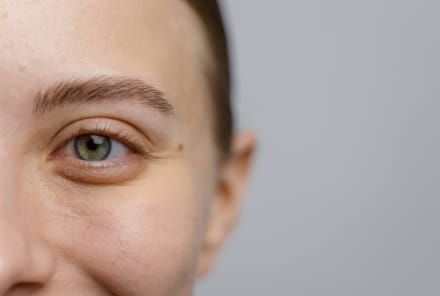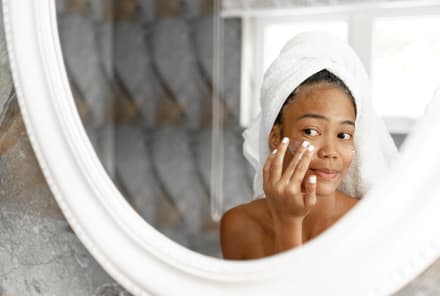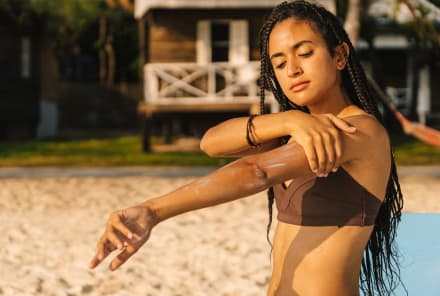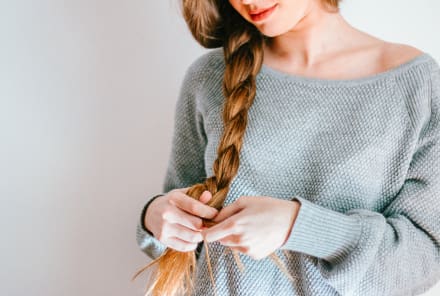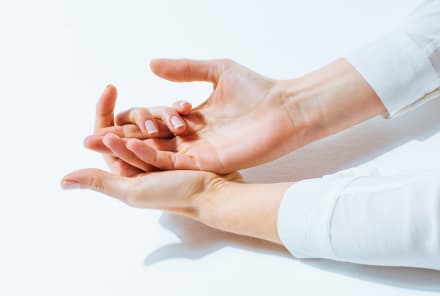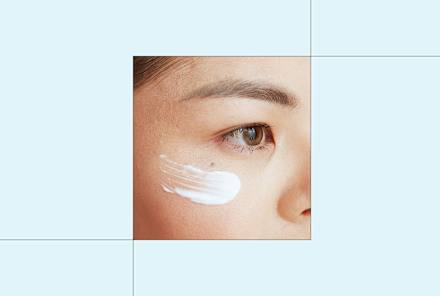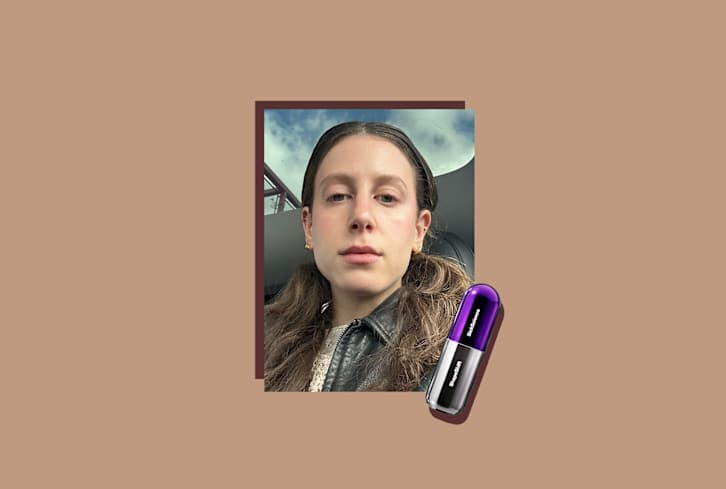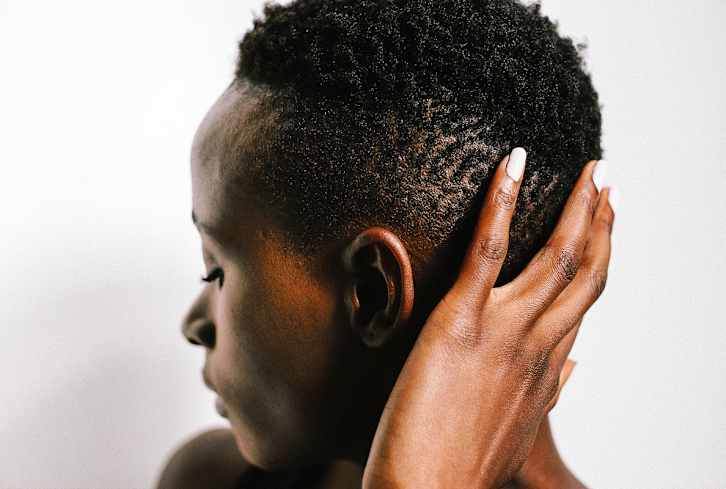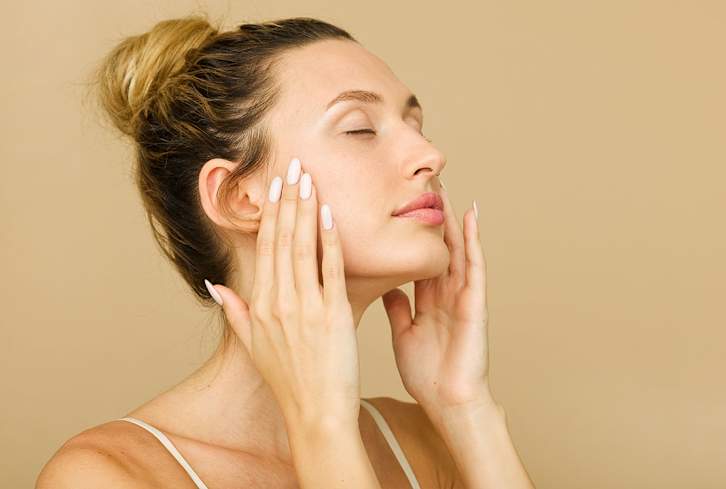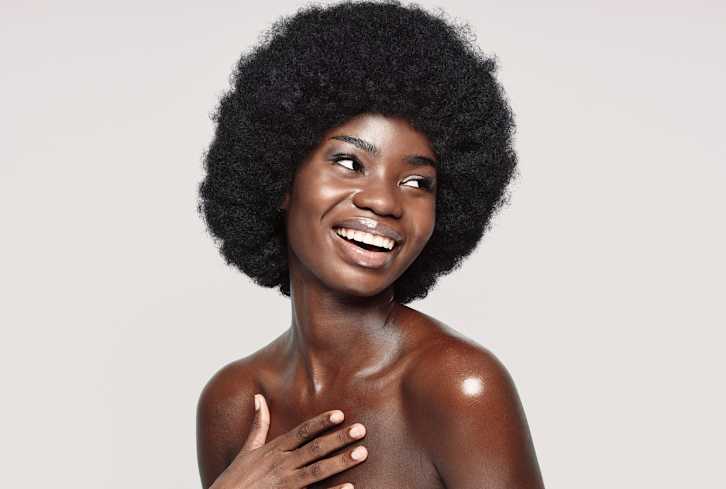Advertisement
This Is The Real Reason You Look In The Mirror When You Cry, Experts Say


There's something undeniably alluring about how you look post-cry—perhaps your cheeks turn rosy, your lashes naturally darken, or your eyes shine with unshed tears. There may also be snot and/or running mascara, but that vulnerability and intensity can be quite compelling, so it's only natural to sneak a glance in the mirror or even snap a photo.
But these private moments have become amplified in pop culture: Take Bella Hadid's vulnerable crying selfie, for example; Lizzo tearfully singing along to Billie Eilish's "Happier Than Ever"; or Sydney Sweeney's viral snapshot from the second season of Euphoria, her character bleary-eyed among a bed of roses.
The "sad girl aesthetic" has certainly reentered the zeitgeist, and now it has officially reached its peak: "Crying makeup" has become its own TikTok trend with hundreds of million views.
"You know how we look good when we cry? Just comes with the territory," one user says, who proceeds to replicate the look with liquid glitter and gloss. Now, we can recreate a dewy, post-sob visage every single day, if we want to—but what will that ultimately do to our mental health?
The "sad girl aesthetic" has reentered the chat
"[Crying makeup] is meant to replicate the way one looks after a good crying sesh—it's ethereal, like a Tim Burton character. The look itself is soft, blurred and monochromatic," explains makeup artist Alexandra Compton, product development manager at Credo. Although the trend has become TikTok's aesthetic of the moment, it's not exactly a new phenomenon. The "sad girl" was the poster child of the grungy, Tumblr era, with Lana Del Rey's "Pretty When You Cry" as the anthem. As other Tumblr-inspired trends become popular again (like "indie sleaze"), it makes sense that the sad girl aesthetic would enter another era.
But the "sad girl" even predates social media: Just think of poetry by Emily Dickinson or John Keats or the tragedy of Romeo and Juliet. The sad girl has been a cultural symbol throughout history. She is a muse, a figure of helplessness—but she's reentering the zeitgeist at a time when mental health is notably plummeting, especially among teens and young adults; the CDC found 1 in 4 teenagers reported being depressed in 20201, and it's not a coincidence that these statistics go hand-in-hand with a social media trend that encourages wearing your heart on your sleeve via weepy, flushed makeup.
How "crying makeup" affects mental health
On the one hand, millions of people acknowledging their sadness feels painfully, beautifully authentic. "Being sad is being human; it expands our empathy and capacity to give and receive love," affirms Compton. "There is power in vulnerability."
But on the other hand, there's a difference between sharing a selfie after a real sob session and tapping a shimmery shadow on your eyelids and Cupid's bow to replicate faux tears. The former seems more vulnerable and authentic; the latter is actually quite contrived.
And according to clinical psychologist Chloe Carmichael, Ph.D., the latter might turn into a case of behavioral activation, where curating a sad, defeated look can cause you to become both sad and defeated, even if you weren't previously feeling that way. "It's almost taking steps to intensify or savor the experience of that sadness, which can cultivate a sense of attachment to the sadness," she explains. "An attachment to negativity can actually become a barrier to wellness if we get too comfortable."
It quickly becomes a "chicken and egg" situation: Does replicating sad girl makeup cause you to become sad, or does the look help you express those emotions you already have? Makeup can be a form of self-expression, after all, and the trend might help people relay difficult emotions when words won't do them justice. But as one TikTok user says in a viral video: "If you're not in the mood to cry, here's how to get the look with makeup," which implies manifesting a sense of despair. That slight difference can tip the scales in terms of mental health.
Regardless of the motive, the sad girl aesthetic can also create "secondary gains," Carmichael says, where one might experience peripheral benefits from an illness, whether mental or physical. "The classic example in a psychology textbook is a little girl who has a cast on her leg, so she doesn't have to go to school, and all of her friends come over and cheer her on every day," she explains. "Then when the doctor says it's time to take off the cast, the little girl insists that her leg is not healed… She becomes so attached to the secondary gains of the illness that she doesn't want to give it up."
The same could be said for sad girl makeup: In this case, the likes and comments one might get after posting a crying makeup video create literal gains that can, in turn, perpetuate this feeling of sadness. "At the end of the day, people on TikTok want interaction. They want attention. They're not posting it to TikTok so that nobody will see it," says Carmichael. "They're in an environment that almost rewards negativity."
Of course, people coming together and being open about their emotions is a positive thing. But it feels different from, say, a grief group, where there's also an emphasis on working through those difficult emotions. "There's an acknowledgment of the sadness, but there's also a focus on the fact that we're going to move forward," adds Carmichael. "Whereas with sad girl makeup, that doesn't necessarily seem to be part of the ecosystem."
Acknowledging your ups and downs on social media can be helpful, but at the end of the day, you might want to reflect on why you're really picking up the blush.
The takeaway
The "sad girl aesthetic" is here to stay (in fact, it never really left), so rather than taking a stance on whether it's "good" or "bad" for mental health, you might want to consider your personal motives behind the makeup. Does becoming a "sad girl" make you even more sad? Or does it help you express your own vulnerability? Makeup has no rules, but it can certainly influence the way you feel—let's not pretend these tutorials are just for some frivolous fun.
